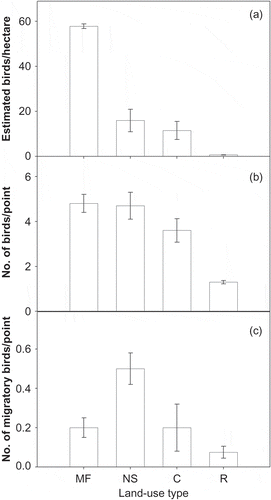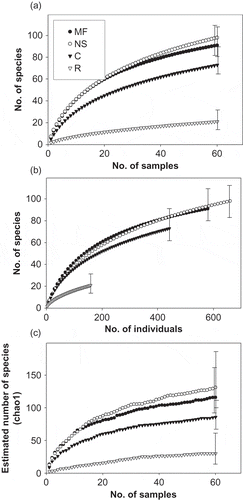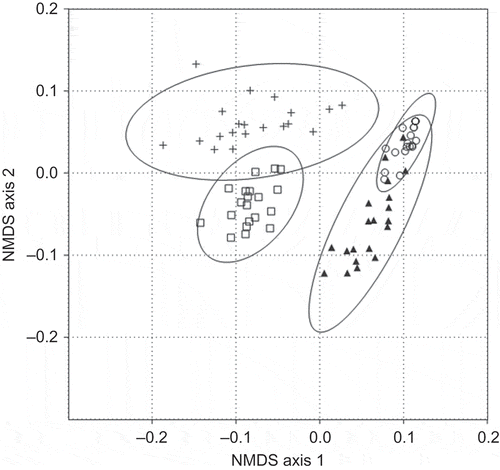Figures & data
Table 1. Density estimates (number of birds per ha, D) and the corresponding coefficients of variation (CV) and 95% confidence intervals (CI95) generated by the program DISTANCE based on the number of bird detections (n).
Figure 1. Abundance estimates for birds in various landscapes of Central Panama. (a) Density estimates and 95% confidence intervals (error bars) for birds (no. of birds per hectare) using distance corrections. (b) Mean detections (or no. of birds) per point count survey for all bird species, error bars are one standard error. (c) Mean detections (or no. of birds per point count survey for migratory birds only, error bars are one standard error. For all panes, MF = mature forest, NS = natural succession, C = cattle pasture, R = reforestation with native species.

Figure 2. Species richness curves and estimators for birds in various landscapes in Central Panama. Species rarefaction curves are scaled by (a) sample and (b) number of individual birds counted. (c) The Chao1 species richness estimator scaled by number of samples. For all panels, error bars represent 95% of confidence intervals and closed circles = mature forest, open circles = natural succession, closed triangles = cattle pasture, and open triangles = native species reforestation.

Figure 3. NMDS ordination plot using the Bray–Curtis index to show similarity among habitats, with 95% confidence ellipses. Each point represents the bird community species composition at one count point, summed over the different counts. Habitat labels are: mature forest = crosses, natural succession = open squares, reforestation = open circles, cattle pasture = filled triangles.

Table 2. Cumulative numbers of species observed and estimated number of species present in each land use, using point count data only from the Agua Salud Ecosystem Services Project in Central Panama.
Table 3. Similarity of species composition for total bird communities based on the Bray–Curtis index of similarity, among all pairs of habitats sampled in Central Panama.
Table 4. Most abundant bird species in each land-use type at the Agua Salud Ecosystem Services project in Central Panama, primary foraging substrate, diet and habitat affinity.